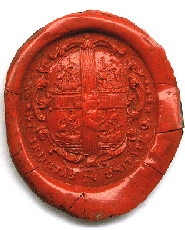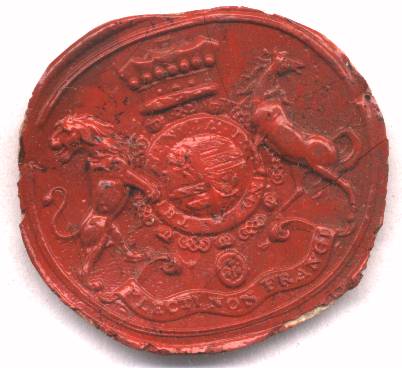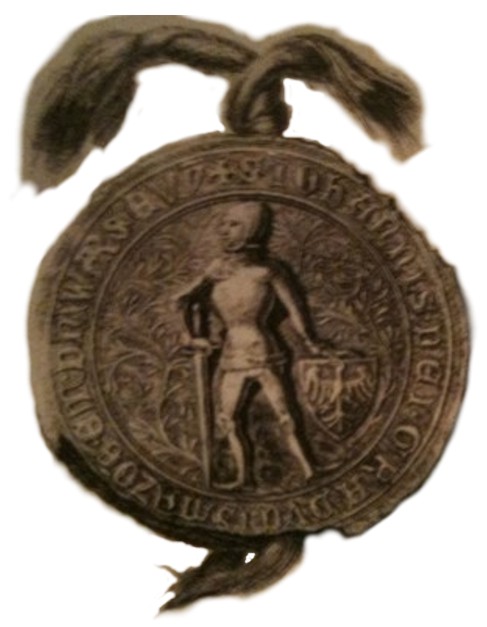BEFORE ENVELOPES: WAX LETTER SEALS

In 2000 BC the Babylonians wrapped their clay letter tablets in another piece of clay that they then fired; this had to be broken to be able to read the letter. When papyri were used we think they were rolled but were they sealed? Envelopes as we know them were introduced in the 16th century for official letters to be sent "under cover"; they were home-made. The inventor of the ‘standard size’ envelope is not known.
But from the 16th to the late-19th centuries most people did not use envelopes because the hand-made paper of the time was so expensive. They wrote on every inch of a sheet, sometimes even writing across the page as well as down it; folded it, and left a small area for the address. This sheet of paper was sealed with a wax seal sometimes impressed with a personal picture or design – an initial, a coat of arms or an appropriate message or picture. The wax was usually red in color, sometimes black.
One of the first coats of arms identified was that of Sir Francis Drake. This has a complicated crest celebrating his voyage around the world and two mottoes; it was granted to him in 1581. Otherwise it is a fairly simple coat of arms. Others are more complicated. Viscount Palmerston, a Prime Minister during Victoria’s reign, was a Knight of the Garter so includes the Garter and its motto around the shield.
In 1215, England's King John affixed a large wax seal to indicate he accepted Magna Carta, the document which founded British and American freedom. Historians believe John was illiterate, so could not sign his name. Queen Elizabeth II became the only monarch to sign the charter, in a ceremony at Runnymede in 1965.

The seal has served as a stamp of indisputable authenticity, just as a signature is accepted in the world today. Seals were first used by kings and governments long ago. New laws and proclamations required the authoritative stamp of a seal. During Medieval Times, almost everyone had their own Seal, but Royalty would own several, including their own “Great Seal”. As a well as seals for all their courts and officials. Long ago, betrothals were pre-arranged – therefore true words of love were secretly written and the envelope’s contents was secured by a wax seal, so that the recipient could be assured that their passion would be unknown to others. A broken seal implied broken trust.. and no person of integrity would tamper with a wax emblem.
For more information on the history of sealing wax visit Scrapbook.com



Edinburgh Castle - Edinburgh Scotland




The seal of Duke Janus I of Masovia, 1379

Vintage sealing wax factory art plate







